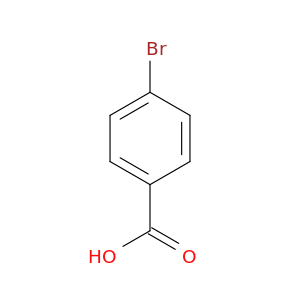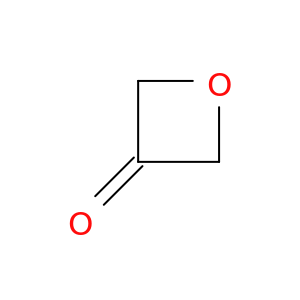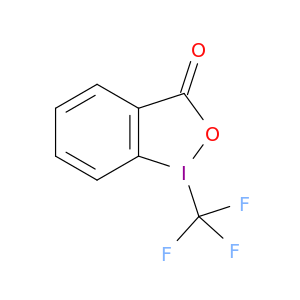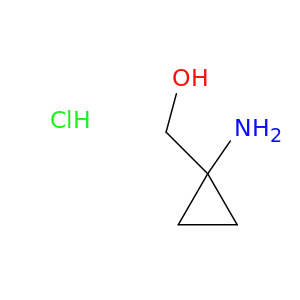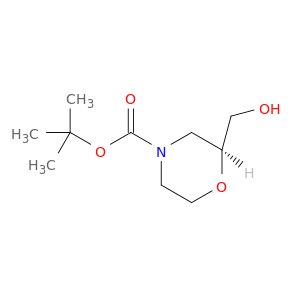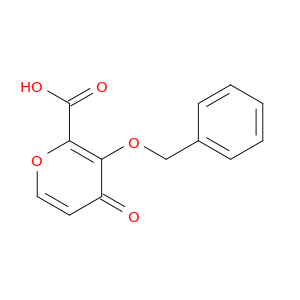200,000+ products from a single source!
sales@angenechem.com
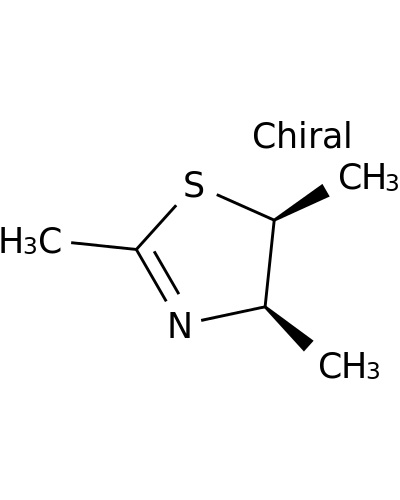
23236-43-3 | Thiazole, 4,5-dihydro-2,4,5-trimethyl-, (4R,5S)-rel-
CAS No: 23236-43-3 Catalog No: AG002MLU MDL No:
Product Description
Catalog Number:
AG002MLU
Chemical Name:
Thiazole, 4,5-dihydro-2,4,5-trimethyl-, (4R,5S)-rel-
CAS Number:
23236-43-3
Molecular Formula:
C6H11NS
Molecular Weight:
129.2232
IUPAC Name:
2,4,5-trimethyl-4,5-dihydro-1,3-thiazole
InChI:
InChI=1S/C6H11NS/c1-4-5(2)8-6(3)7-4/h4-5H,1-3H3
InChI Key:
CIEKNJJOENYFQL-UHFFFAOYSA-N
SMILES:
CC1=N[C@@H]([C@@H](S1)C)C
NSC Number:
98275
Properties
Complexity:
120
Compound Is Canonicalized:
Yes
Covalently-Bonded Unit Count:
1
Defined Atom Stereocenter Count:
0
Defined Bond Stereocenter Count:
0
Exact Mass:
129.061g/mol
Formal Charge:
0
Heavy Atom Count:
8
Hydrogen Bond Acceptor Count:
2
Hydrogen Bond Donor Count:
0
Isotope Atom Count:
0
Molecular Weight:
129.221g/mol
Monoisotopic Mass:
129.061g/mol
Rotatable Bond Count:
0
Topological Polar Surface Area:
37.7A^2
Undefined Atom Stereocenter Count:
2
Undefined Bond Stereocenter Count:
0
XLogP3:
1.2
Literature
| Title | Journal |
|---|---|
| Exposure to predator odor and resulting anxiety enhances the expression of the α2 δ subunit of voltage-sensitive calcium channels in the amygdala. | Journal of neurochemistry 20130601 |
| Parallel mitral and tufted cell pathways route distinct odor information to different targets in the olfactory cortex. | The Journal of neuroscience : the official journal of the Society for Neuroscience 20120606 |
| Fear-like behavioral responses in mice in different odorant environments: Trigeminal versus olfactory mediation under low doses. | Behavioural processes 20120601 |
| Unconditioned freezing is enhanced in an appetitive context: implications for the contextual dependency of unconditioned fear. | Neurobiology of learning and memory 20120501 |
| Postnatal exposure to predator odor (TMT) enhances spatial learning in mice adulthood. | Behavioural brain research 20120401 |
| fMRI fingerprint of unconditioned fear-like behavior in rats exposed to trimethylthiazoline. | European neuropsychopharmacology : the journal of the European College of Neuropsychopharmacology 20120301 |
| Inactivation of the prelimbic cortex enhances freezing induced by trimethylthiazoline, a component of fox feces. | Behavioural brain research 20110801 |
| Mixture of cis-3-hexenol and trans-2-hexenal attenuates behavioral and stress responses induced by 2,5-dihydro-2,4,5-trimethylthiazoline and electric footshock stress in rats. | Physiology & behavior 20110706 |
| Species-relevant inescapable stress differently influences memory consolidation and retrieval of mice in a spatial radial arm maze. | Behavioural brain research 20110516 |
| Increased BOLD activation to predator stressor in subiculum and midbrain of amphetamine-sensitized maternal rats. | Brain research 20110325 |
| Different patterns of neuronal activities in the infralimbic and prelimbic cortices and behavioral expression in response to two affective odors, 2,5-dihydro-2,4,5-trimethylthiazoline and a mixture of cis-3-hexenol and trans-2-hexenal, in the freely moving rat. | Behavioural brain research 20110317 |
| Fear induced neuronal alterations in a genetic model of depression: an fMRI study on awake animals. | Neuroscience letters 20110204 |
| Calcitonin gene-related peptide in the bed nucleus of the stria terminalis produces an anxiety-like pattern of behavior and increases neural activation in anxiety-related structures. | The Journal of neuroscience : the official journal of the Society for Neuroscience 20110202 |
| A fear-inducing odor alters PER2 and c-Fos expression in brain regions involved in fear memory. | PloS one 20110101 |
| Genetic visualization of the secondary olfactory pathway in Tbx21 transgenic mice. | Neural systems & circuits 20110101 |
| Exposure to TMT odor affects adrenal sympathetic nerve activity and behavioral consequences in rats. | Behavioural brain research 20101225 |
| Structure-activity relationships on the odor detectability of homologous carboxylic acids by humans. | Experimental brain research 20101101 |
| Cave-dwelling bats do not avoid TMT and 2-PT - components of predator odour that induce fear in other small mammals. | The Journal of experimental biology 20100715 |
| Spatial arrangement of glomerular molecular-feature clusters in the odorant-receptor class domains of the mouse olfactory bulb. | Journal of neurophysiology 20100601 |
| Combining low- and high-energy tandem mass spectra for optimized peptide quantification with isobaric tags. | Journal of proteomics 20100210 |
| Application of a naturalistic psychogenic stressor in periadolescent mice: effect on serum corticosterone levels differs by strain but not sex. | BMC research notes 20100101 |
| Comparative Fear-Related Behaviors to Predator Odors (TMT and Natural Fox Feces) before and after Intranasal ZnSO(4) Treatment in Mice. | Frontiers in behavioral neuroscience 20100101 |
| Behavioral effects and pattern of brain c-fos mRNA induced by 2,5-dihydro-2,4,5-trimethylthiazoline, a component of fox feces odor in GAD67-GFP knock-in C57BL/6 mice. | Behavioural brain research 20090914 |
| The medial hypothalamic defensive circuit and 2,5-dihydro-2,4,5-trimethylthiazoline (TMT) induced fear: comparison of electrolytic and neurotoxic lesions. | Brain research 20090825 |
| Aversion- vs fear-inducing properties of 2,4,5-trimethyl-3-thiazoline, a component of fox odor, in comparison with those of butyric acid. | The Journal of experimental biology 20090801 |
| Female fear: influence of estrus cycle on behavioral response and neuronal activation. | Behavioural brain research 20090719 |
| Prior sexual experience increases hippocampal cell proliferation and decreases risk assessment behavior in response to acute predator odor stress in the male rat. | Behavioural brain research 20090608 |
| Effects of environmental novelty on fear-related behavior and stress responses of rats to emotionally relevant odors. | Behavioural brain research 20090516 |
| Viral vector induction of CREB expression in the periaqueductal gray induces a predator stress-like pattern of changes in pCREB expression, neuroplasticity, and anxiety in rodents. | Neural plasticity 20090101 |
| Restoring Acid-sensing ion channel-1a in the amygdala of knock-out mice rescues fear memory but not unconditioned fear responses. | The Journal of neuroscience : the official journal of the Society for Neuroscience 20081217 |
| Chronic corticosterone administration does not potentiate unconditioned freezing to the predator odor, trimethylthiazoline. | Behavioural brain research 20081201 |
| Analysis of behavioral constraints and the neuroanatomy of fear to the predator odor trimethylthiazoline: a model for animal phobias. | Neuroscience and biobehavioral reviews 20080901 |
| The role of 5-HT1A receptors in the behavioral responses associated with innate fear. | Behavioral neuroscience 20080601 |
| Inactivation of the lateral septum blocks fox odor-induced fear behavior. | Neuroreport 20080416 |
| Innate versus learned odour processing in the mouse olfactory bulb. | Nature 20071122 |
| Targeting ASIC1a reduces innate fear and alters neuronal activity in the fear circuit. | Biological psychiatry 20071115 |
| Comparative behavioral effects between synthetic 2,4,5-trimethylthiazoline (TMT) and the odor of natural fox (Vulpes vulpes) feces in mice. | Behavioral neuroscience 20071001 |
| Two inbred rat strains contrasting for anxiety-related behaviors show similar levels of defensive responses to cat odor. | Behavioral and brain functions : BBF 20070101 |
| Genetic influences on behavioral and neuroendocrine responses to predator-odor stress in rats. | Neuroscience letters 20061201 |
| Acute exposure to predator odor elicits a robust increase in corticosterone and a decrease in activity without altering proliferation in the adult rat hippocampus. | Experimental neurology 20061001 |
| Endocannabinoids modulate stress-induced suppression of hippocampal cell proliferation and activation of defensive behaviours. | The European journal of neuroscience 20061001 |
| Defensive responses of Wistar and Sprague-Dawley rats to cat odour and TMT. | Behavioural brain research 20060925 |
| Not all rat strains are equal: differential unconditioned fear responses to the synthetic fox odor 2,4,5-trimethylthiazoline in three outbred rat strains. | Behavioral neuroscience 20060401 |
| Temporary inactivation of the medial and basolateral amygdala differentially affects TMT-induced fear behavior in rats. | Behavioural brain research 20060215 |
| Transient changes in nucleus accumbens amino acid concentrations correlate with individual responsivity to the predator fox odor 2,5-dihydro-2,4,5-trimethylthiazoline. | Journal of neurochemistry 20060101 |
| Noradrenaline transmission within the ventral bed nucleus of the stria terminalis is critical for fear behavior induced by trimethylthiazoline, a component of fox odor. | The Journal of neuroscience : the official journal of the Society for Neuroscience 20050622 |
| Trimethylthiazoline supports conditioned flavor avoidance and activates viscerosensory, hypothalamic, and limbic circuits in rats. | American journal of physiology. Regulatory, integrative and comparative physiology 20050601 |
| Detecting danger--or just another odorant? Olfactory sensitivity for the fox odor component 2,4,5-trimethylthiazoline in four species of mammals. | Physiology & behavior 20050215 |
| Brief exposure to predator odor and resultant anxiety enhances mesocorticolimbic activity and enkephalin expression in CD-1 mice. | The European journal of neuroscience 20041101 |
| The pattern of brain c-fos mRNA induced by a component of fox odor, 2,5-dihydro-2,4,5-trimethylthiazoline (TMT), in rats, suggests both systemic and processive stress characteristics. | Brain research 20041029 |
| Prolonged effects of repeated cocaine on medial prefrontal cortex dopamine response to cocaine and a stressful predatory odor challenge in rats. | Brain research 20031121 |
| Anti-nociception following exposure to trimethylthiazoline, peripheral or intra-amygdala estrogen and/or progesterone. | Behavioural brain research 20030915 |
| Exposure of mice to a predator odor increases acoustic startle but does not disrupt the rewarding properties of VTA intracranial self-stimulation. | Brain research 20030829 |
| Failure to produce conditioning with low-dose trimethylthiazoline or cat feces as unconditioned stimuli. | Behavioral neuroscience 20030401 |
| Fox odour affects corticosterone release but not hippocampal serotonin reuptake and open field behaviour in rats. | Brain research 20030124 |
| Temporary inactivation of the bed nucleus of the stria terminalis but not of the amygdala blocks freezing induced by trimethylthiazoline, a component of fox feces. | The Journal of neuroscience : the official journal of the Society for Neuroscience 20030101 |
| Odor-induced variation in anxiety-like behavior in mice is associated with discrete and differential effects on mesocorticolimbic cholecystokinin mRNA expression. | Neuropsychopharmacology : official publication of the American College of Neuropsychopharmacology 20021101 |
| Fear-like biochemical and behavioral responses in rats to the predator odor, TMT, are dependent on the exposure environment. | Synapse (New York, N.Y.) 20021001 |
| Selective activation of the A10, but not A9, dopamine neurons in the rat by the predator odor, 2,5-dihydro-2,4,5-trimethylthiazoline. | Neuroscience letters 20020816 |
| Not all 'predator odours' are equal: cat odour but not 2,4,5 trimethylthiazoline (TMT; fox odour) elicits specific defensive behaviours in rats. | Behavioural brain research 20020201 |
| Pyriform cortex beta-waves: odor-specific sensitization following repeated olfactory stimulation. | Brain research 20010223 |
Related Products
Featured Products
© 2019 Angene International Limited. All rights Reserved.


